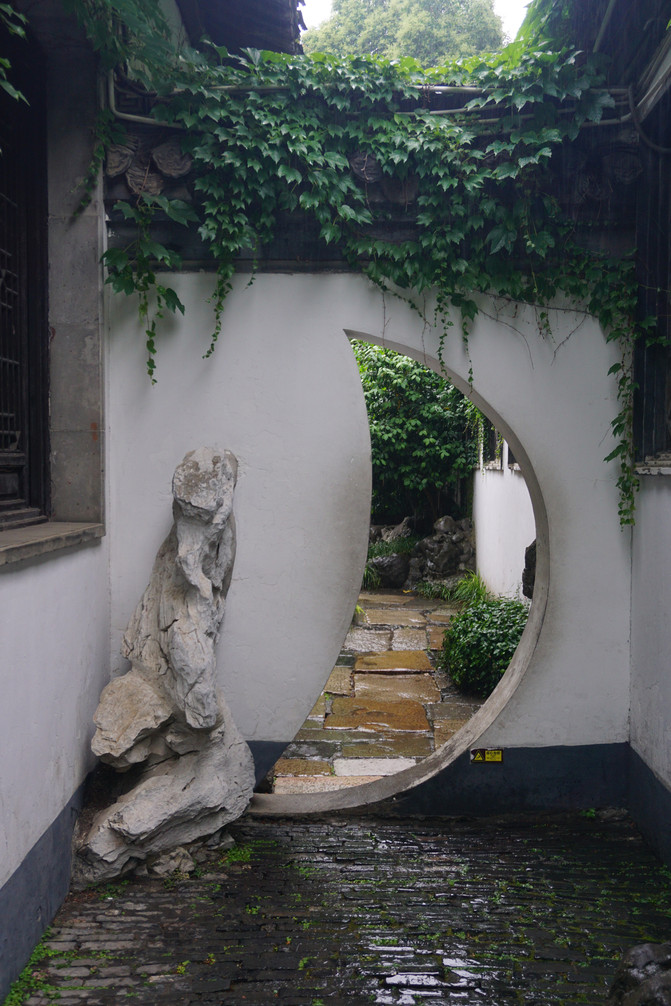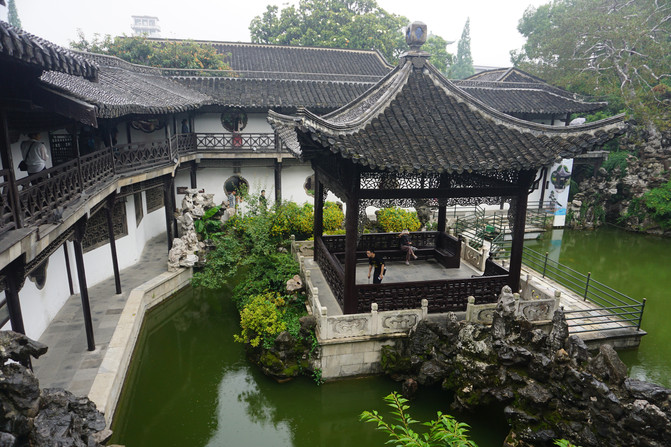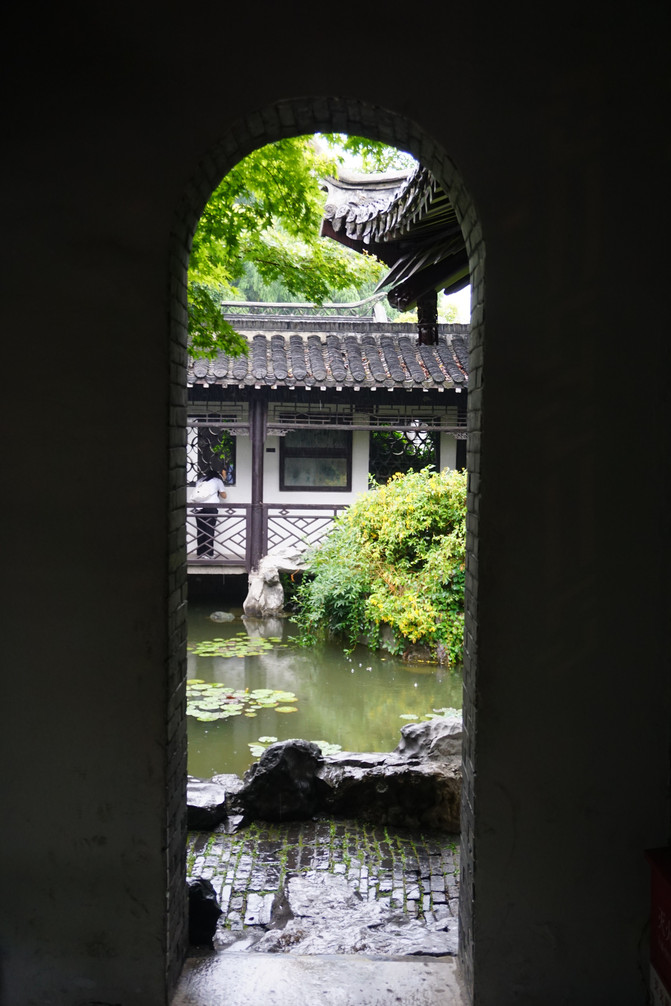Yangzhou Travel Notes

Erge Park
The day I came to Geyuan, it was drizzling, and I walked in the smoky and misty gardens, looking at the small bridges and flowing water, blue bricks and black tiles, pavilions, rockery and green plants... The Jiangnan gardens in the misty rain have endless charm and softness.
The most typical features of the Geyuan are the bamboo and rockery in the garden. The owner loves bamboo and planted a variety of bamboos in the courtyard, taking half of the "bamboo", and taking Su Shi's meaning that "you can eat without meat, but you cannot live without bamboo. Without meat makes you thin, and without bamboo makes you vulgar", so he called the garden a garden. Its rockery is made of bamboo shoots, lake stones, yellowstone, and Xuan stones stacked to symbolize the four seasons of spring, summer, autumn and winter. The owner of the garden is the leader of salt merchants. The richest salt merchants must spend a lot of money on building the garden. The nanmu hall where the owner dines and small banquets is built of nanmu. The roof beams and pillars are all precious golden nanmu. Hundreds of years have passed, these woods have no insect eyes and no traces of corrosion. The furniture is all made of mahogany.










Sanhe Park
He Garden was built in the late Qing Dynasty. Its architectural style is a combination of Chinese and Western pavilions and pavilions, as well as Western elements embedded, such as European-style braces and shutters, and various European furnishings in the Jade Embroidery Building. What is impressive is the winding and winding complex corridors that connect the various buildings in the park. My favorite thing is the flower windows open on the corridors. The scenery I can see through the flower windows is also different. It can be said to be a scene step by step. Different scenery. There is a "mirror flower and water moon" next to the pool of the stone mountain house built by Shi Tao. When Shi Tao designed the stone mountain house, he cut a round hole in the rockery. When the light passes through the round hole and enters the water, it is like a round moon Reflects in the water. It, together with Yueyuan Gate, Yueyuan Tower, and Near-Moon Pavilion, constitute the four moon views of He Garden. "Three parts of the world are bright and night, and two parts of the scoundrel are Yangzhou." The moon view is also one of the characteristics of Yangzhou gardens. I think the Heyuan Garden is exquisitely conceived, flexible but not sluggish, and diverse. What is even more amazing is that the He family has produced many talents in future generations. He Zhiqian, the owner of He Garden, has produced outstanding achievements among his grandparents and grandchildren Hanlin (He Jun, He Shenghao), brother doctors (He Shizhen, He Shimei), sister academicians (Wang Chengshu, He Zuoxiu) and others. Among them, my brother Dr. founded a private Zhizhi University in Shanghai in 1924. Fu Lei and Jin Yong, whom we know well, studied here. Wang Chengshu participated in the manufacture of China's first atomic bomb. The He family can be regarded as a scholarly family and a family with a hairpin family. The family tradition has been passed down and the cultural context has been extended continuously.














Sanshen West Lake
Slender West Lake was originally a tributary of the Yangzhou section of the Beijing-Hangzhou Grand Canal. Qianlong traveled to the south of the Yangtze River for the sixth time and visited Slender West Lake in Yangzhou many times. Many gardens were built along the coast for the emperor to admire the lakes and mountains and linger in the scenery. I entered from the south gate of Slender West Lake and walked along the long embankment. I passed Xuyuan, Xiaojinshan, Hongqiao, Diaoyutai, Wuting Bridge, White Pagoda, and Du Mu's poem,"Twenty-Four Bridges on Bright Moon Night, Where is the Jade Man taught to blow the whistle?" The winding river, the trees with their branches, the towers and painted boats dotted on both sides of the river, and all kinds of cruise ships passing through the river. This is the picturesque scenery of the misty and rainy south of the Yangtze River, the water and country.
















Sidaming Temple
The main reason to go to Daming Temple is to climb the tower and overlook the panoramic view of Yangzhou.


When I came to Yangzhou, it was already past the most beautiful time of fireworks in March. There were not many tourists during this period, and wherever I visited, I could come and go with my heart. Therefore, there is no perfection. It lies in trade-offs. For me, Yangzhou, I came. I saw it and I devoted myself to it. This is the most beautiful.
Previous Article:Yangzhou
Next Article:March is good in Jiangnan (3 nights and 4 days, Yangzhou, Zhenjiang, Nanjing) 1
